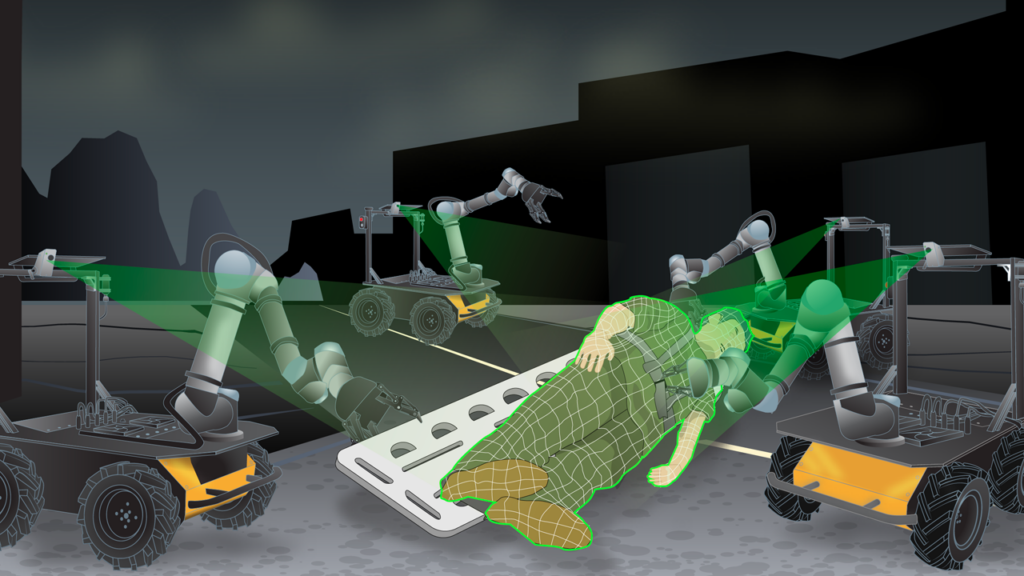BRACE
An autonomous robot collaboration
toolkit to keep combat medics safe
Body-Aware Robotic Appliqué for Collaborative Evacuation (BRACE)
We are working with sponsors from the Army’s Telemedicine & Advanced Technology Research Center (TATRC) to integrate proven sensing and autonomy capabilities into our modular hardware and software Body-Aware Robotic Appliqué for Collaborative Evacuation (BRACE) toolkit.
BRACE can save lives in CASEVAC operations by keeping medics out of harm’s way and facilitating quicker evacuation of casualties from active battlefields.
“The idea here is that uncrewed systems can save the lives of medics, who often face dangerous combat situations when Soldiers get hurt. For example, evacuation robots can prevent medics from being exposed to enemy gunfire or shrapnel.”

Stan German,
Senior Scientist and Principal Investigator on BRACE
The BRACE toolkit uses state-of-the-art perception technologies to support effective manipulation, navigation, maneuvering, and obstacle avoidance in varied operating conditions. Our toolkit performs dynamic world modeling, 3D casualty perception, path planning, and localization onboard each vehicle. BRACE also shares relevant information with networked uncrewed and crewed teammates using a communications manager optimized for constrained-bandwidth networks.
BRACE hardware and software enables plug-and-play integration with current and future uncrewed systems, giving this toolkit unprecedented adaptability.
Under a related effort, we developed our Anthropometry and Pose Observation using Low-Dimensional Latent Optimization (APOLLO) toolkit, a key enabler for BRACE. With APOLLO, robots can visually perceive casualties in real time. With this tech, our BRACE toolkit can identify casualties in an image and model their position and body shape in 3D so that a team of small autonomous robots can remove them from harm.Contact us to learn more about BRACE and our other robotics and autonomy or health and medical capabilities.
This effort was awarded in support of the US Army Medical Research and Materiel Command under Contract No. W81XWH-18-C-0079 and W81XWH-19-C-0107. The views, opinions and/or findings contained in this report are those of the author(s) and should not be construed as an official Department of the Army position, policy or decision.

